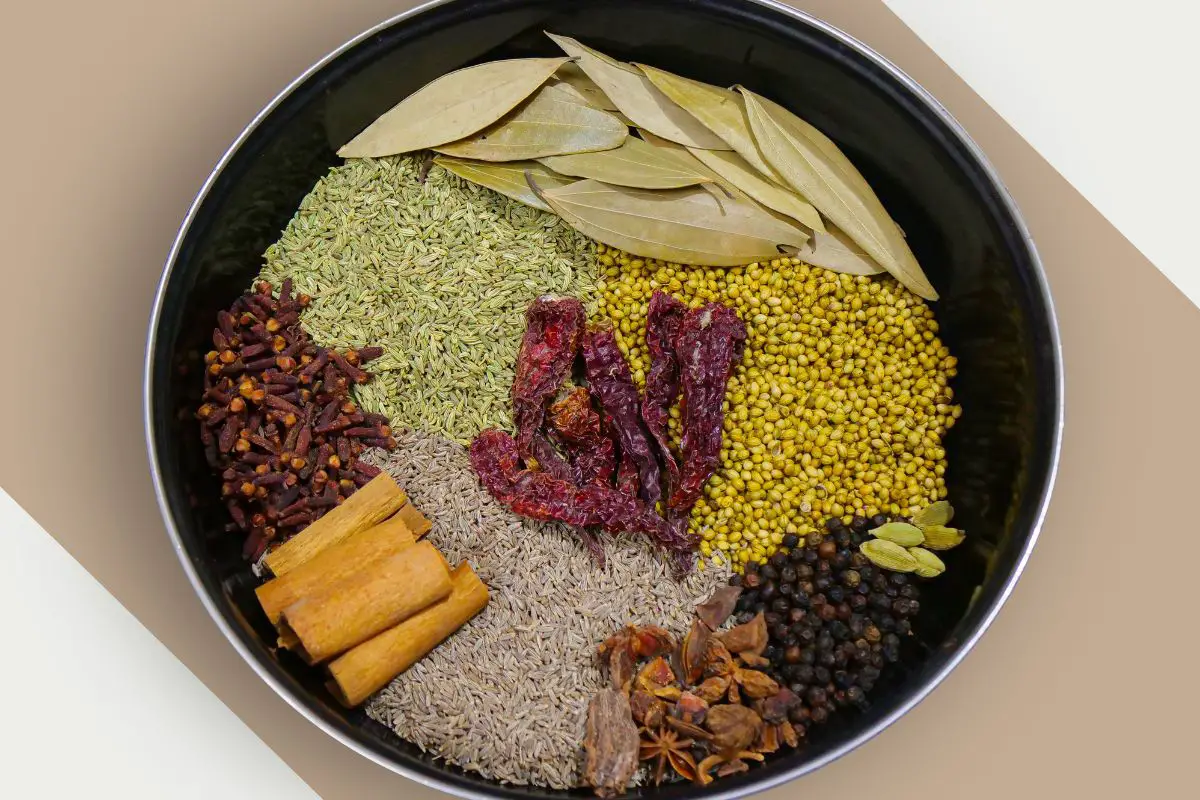The list of ingredients and quantity of spices in garam masala spice mix vary depending on which Indian or Pakistani recipes you make. Also, families in different regions have their unique way of making it.
So, if you plan to make your own traditional and flavor-packed garam masala spice mix to add some sweetness, warmth, and zing to authentic recipes, then this garam masala ingredients list and quantity will give you the most balanced and original blend.
What Is Garam Masala?
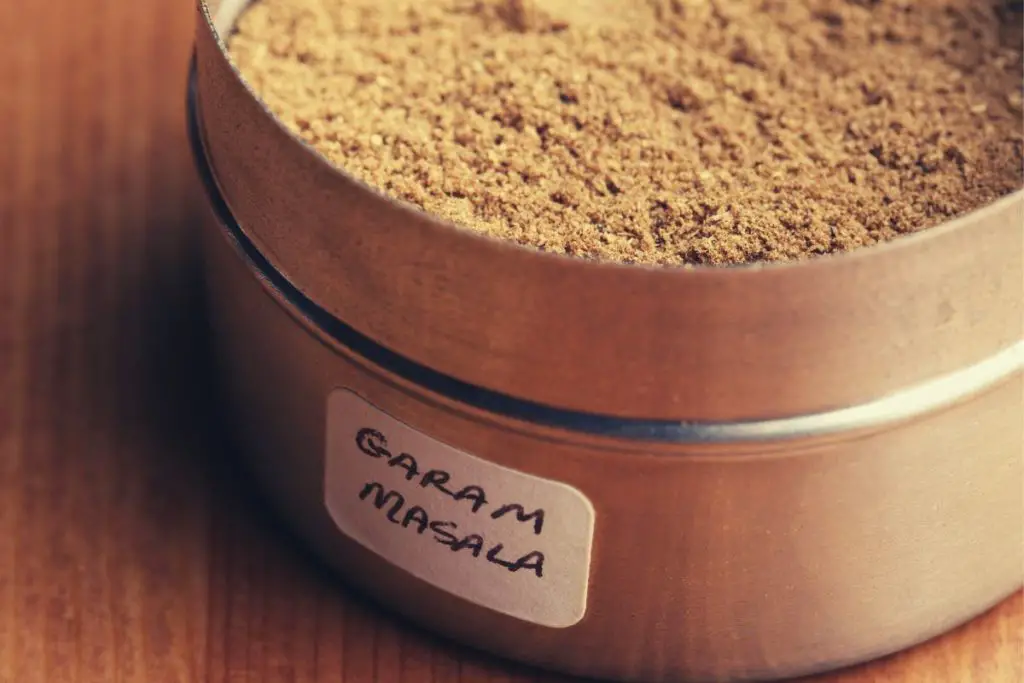
Garam masala is a complex combination of ground spices. It’s traditional in Indian, Pakistani, Sri Lankan, and Bangladeshi cuisine, but it has expanded worldwide due to its aromatic and flavorful charm.
Its name explains the main appeal—garam means ‘spice mixture,’ and masala is ‘hot’ or ‘warm’ in Hindi; therefore, garam masala translates to ‘hot spice mix. In this context, hot does not refer to the heat you’d expect from chilis and instead means the warmth you’d want during cold weather.
As such, garam masala is not particularly spicy. Instead, it has a potent and welcoming flavor from over ten different spices. To prevent flavor loss, the traditional method calls for whole spices instead of ground ones, as the latter loses flavor much faster due to oxidation.
They are lightly toasted in batches to release the aromas, then ground into a fine powder, and are carefully stored away for immediate use within the following weeks.
Common Traditional Garam Masala Ingredients
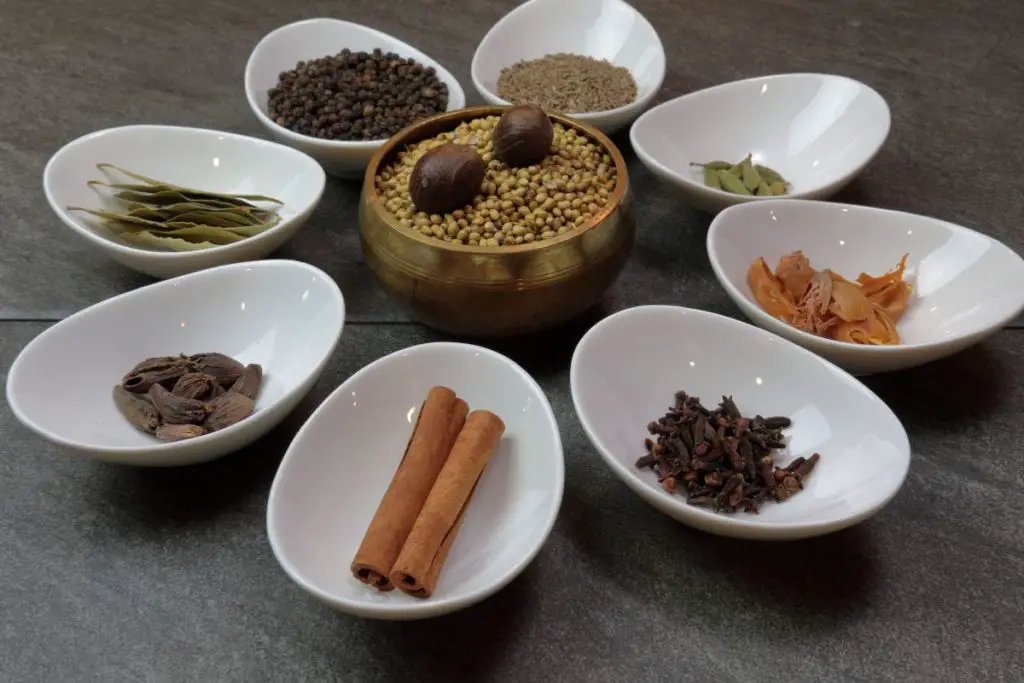
Keep in mind that there are as many garam masala versions as there are families that make them. Each household—and sometimes even within it—has a different take on which spices should take part in this blend.
Likewise, there are regional trends and variations. For example, garam masala in southern India tends to put more emphasis on hot and spicy blends, while northern variations tend to focus on warmth.
However, some spices seem to be more common than others, which are the ones I consider the baseline for a truly authentic garam masala.
1. Coriander Seeds
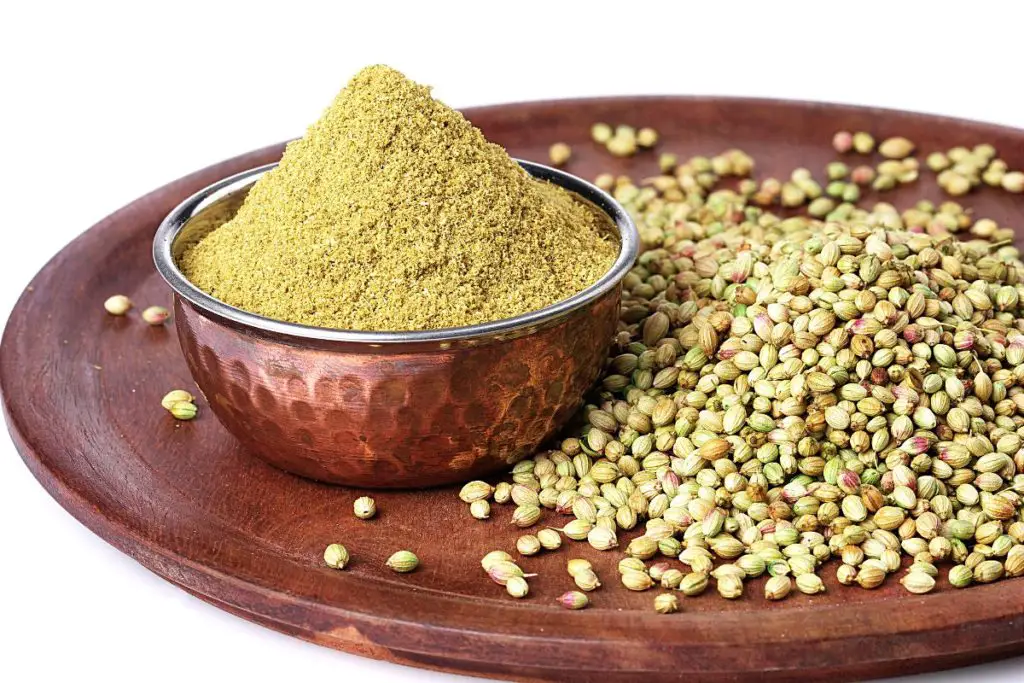
Many consider coriander seeds the most crucial base spice for garam masala, as they have a slightly citric and sweet flavor that can cut through the pungent taste of other, more powerful spices. Beyond that somewhat tart flavor, it also displays a touch of nutty notes, which add a pleasantly warm flavor to the mixture.
Due to its mild flavor, it is often the most abundant spice in the blend.
2. Cumin Seeds
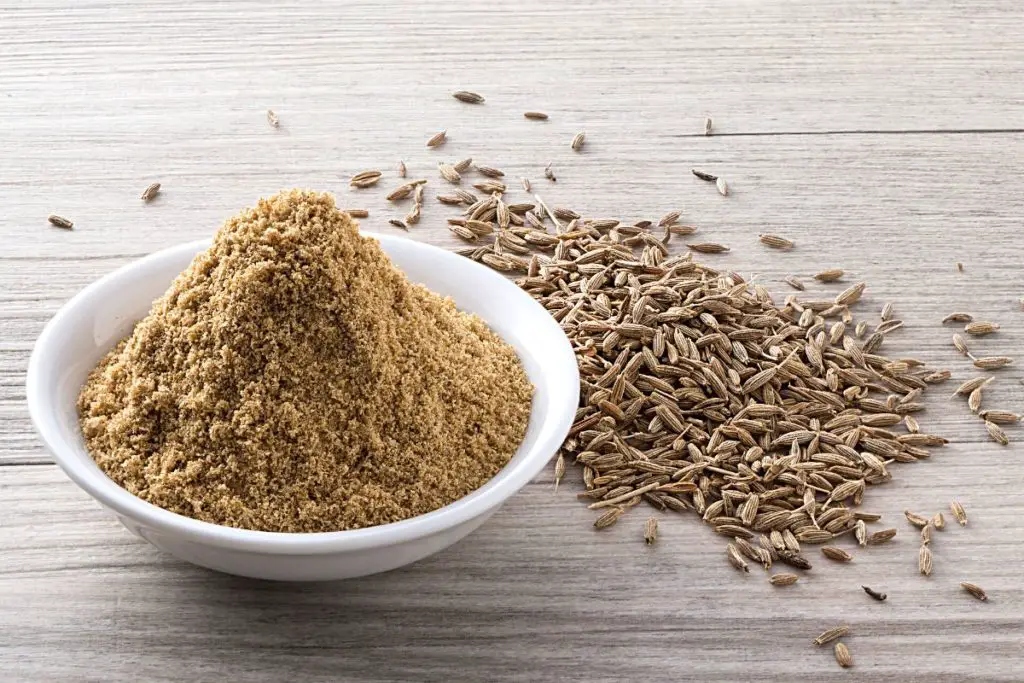
Alongside coriander, cumin seeds remain one of the quintessential spices in garam masala.
Cumin seeds provide a warm, earthy flavor and musky scent with a slight tangy touch. If available, you can also incorporate black cumin seeds, as they add a slightly bitter tinge to the blend. However, you can replace one for the other if so you’d like.
3. Cassia Or Cinnamon
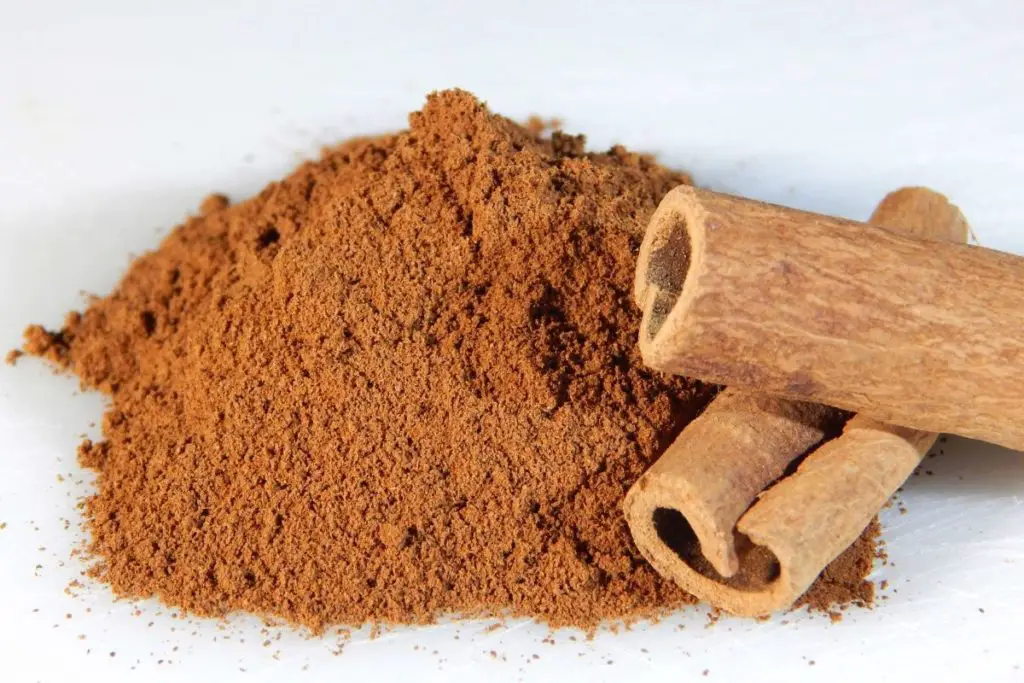
Traditional garam masala calls for cassia bark instead of cinnamon, also known as Chinese cinnamon. Its flavor is more powerful, which makes it a potent spice to add a burst of warmth and sweetness.
Most cinnamon sold in the supermarkets isn’t really cinnamon—that is, from the Cinnamomum aromaticum tree, commonly called Ceylon cinnamon. Instead, it is the famed cassia, making it perfect for garam masala.
4. Green and Black Cardamom

Cardamom is one of the indispensable components of garam masala, and you can get them either as whole pods or as seeds, although it’s best to use the pods for better flavor.
It is not essential to include both varieties, but try to do so if you can—green and black cardamom have different flavor profiles that enhance the blend.
Although both species have a strong and pungent flavor, green cardamom has slight sweet lemony undertones. In contrast, black cardamom has a smoky and slightly cooler flavor.
5. Black Peppercorns
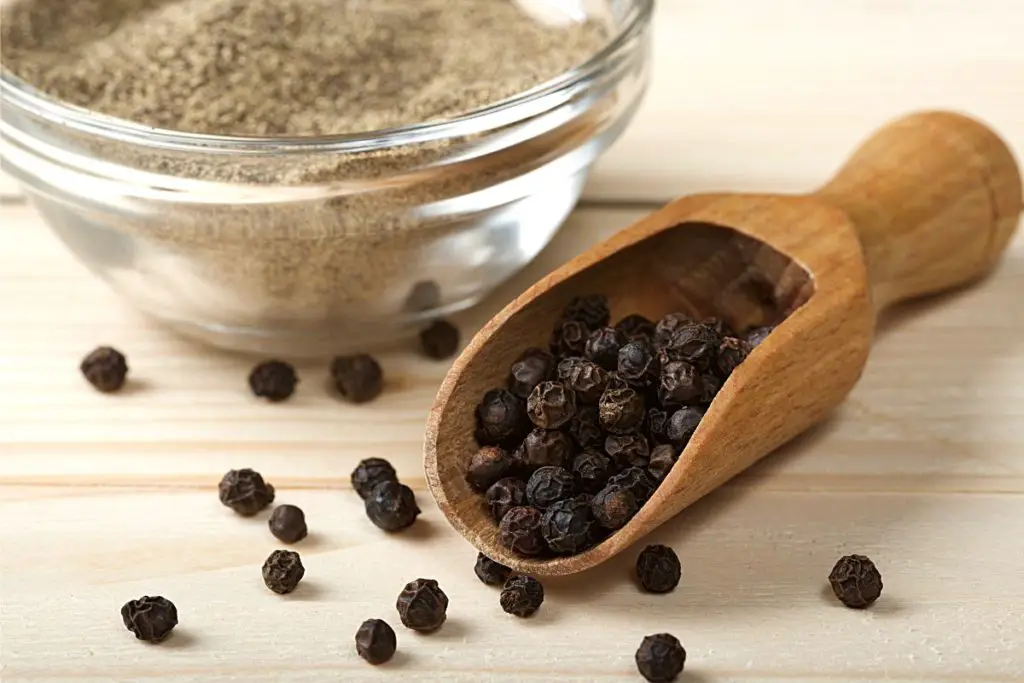
Mainly responsible for incorporating the heat elements into the garam masala, black pepper can also provide a much-valued smoky flavor to the mixture.
Since ground black pepper is a staple seasoning in many kitchens, it bears repeating that your garam masala would be closest to traditional if you use peppercorns, as the pungent touch will be much stronger.
6. Mace
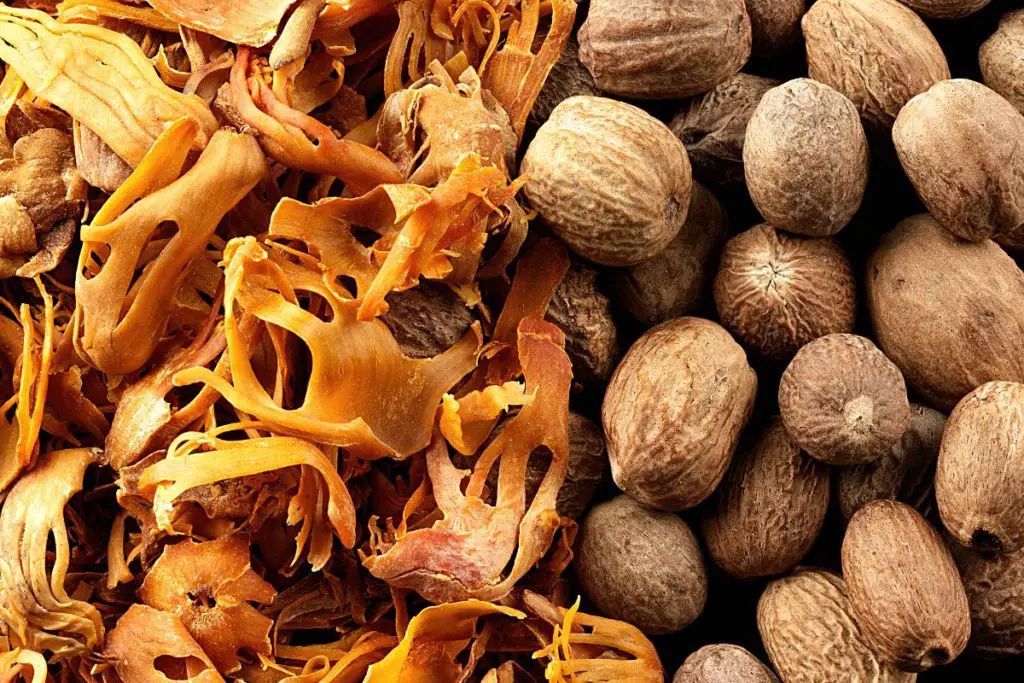
For those unaware, mace is a byproduct of the nutmeg tree, much like nutmeg itself. It is a red membrane found inside the fruit, coating the nutmeg pod. Once the fruit matures and is ready to harvest, the membrane is left to dry.
The flavor is somewhat similar to nutmeg, but not by much. It is warm, woody, less sweet than nutmeg, and slightly more pungent.
Although it’s much easier to find ground mace, it’s worth the effort to find it sold in whole pieces.
7. Cloves
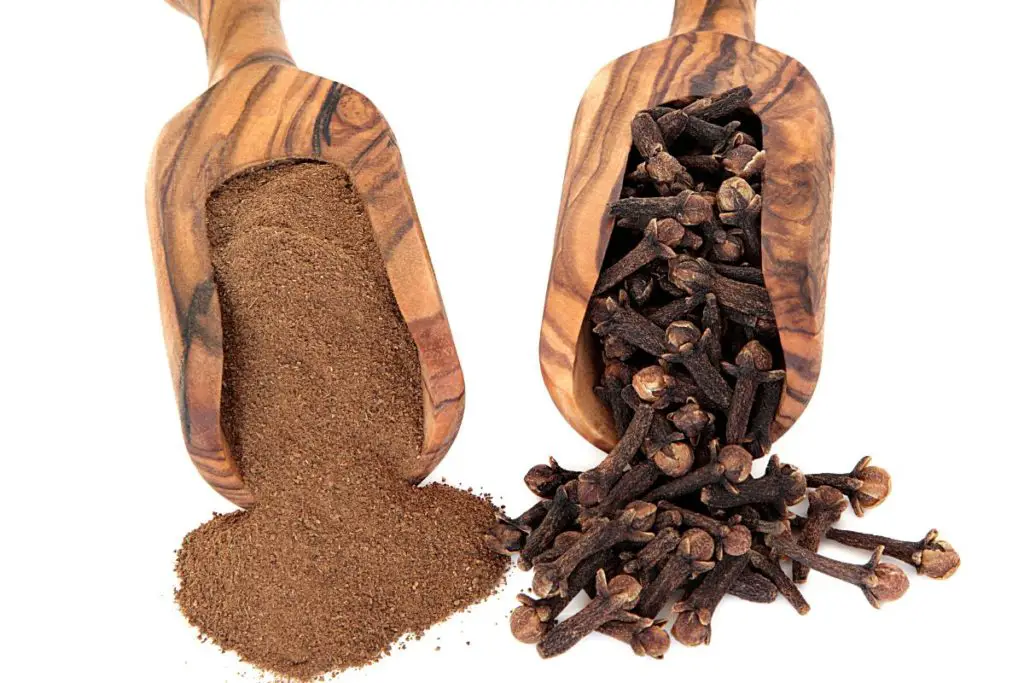
Intensely aromatic and flavorful, cloves are common but not always included in garam masala blends. Their spicy taste adds a powerful touch to the mix, a considerable heat, and a slightly nutty undertone with bitter traces.
Remember that cloves should be used sparingly, as consuming them in excess can be dangerous. However, in healthy amounts, they can reduce inflammation [1].
8. Fennel Seeds
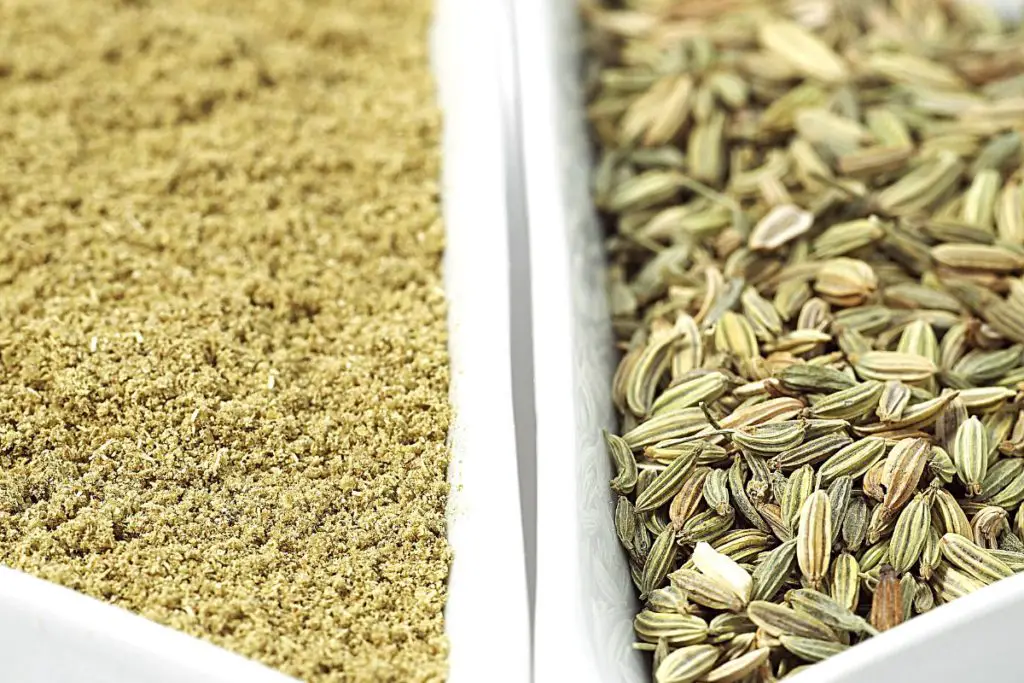
Slightly sweet, astringent, and plenty refreshing, fennel seeds have an anise-like flavor that is somewhat cooling.
Traditionally used as a breath refresher to get rid of garlic breath, this licorice-like spice may seem like an unlikely addition to the warm garam masala. However, it provides a contrasting flavor that balances out the heat of the other spices, indirectly enhancing them.
Other Traditional Garam Masala Ingredients

Many other spices have found their way into garam masala mixtures.
- Dried red chilies
- Poppy seeds
- Star anise
- Indian bay leaves
- Nutmeg
These are some of the common spices used depending on the region and the recipe.
Adding turmeric is also a popular option for some, but others believe the absence of turmeric is the main difference between garam masala and curry. Ultimately, it’s important to remember that experimentation and tradition can go hand in hand.
Related Post: Which Food Is Spicier, Mexican Or Indian? (4 Most Hottest Dishes!)
Garam Masala Ingredients Quantity

Just like how the spice selection for garam masala depends on each person, family, or region’s tastes, the quantities of each spice in the recipe are also a matter of taste. If you search online, odds are you will find dozens upon dozens of combinations, proportions, and variations.
However, there are two rules you need to follow when it comes to quantities of spices for garam masala ingredients—small batches and a balanced range of pungent and mild spices.
1. Make Small Batches
As explained beforehand, oxidization degrades the quality of ground spices over time. As such, making big garam masala batches for months ahead may save you some work but will also make the blend lose flavor over time.
Subsequently, the first rule of quantities and proportions for garam masala is to prepare small batches to be used within a few weeks, ideally up to six weeks. However, if you use it for up to six months or even after that, there is no damage. You may just need to use a bit more as the spice mix has lost some of its tang.
2. Balance Your Spice Blend
Garam Masala combines many spices, some of which are more intense than others. To guarantee a perfect flavor, you must ensure each spice balances one another, which is not always possible with even distribution and requires trial and error to get it right.
You may be tempted to use the same quantity for each spice—say, a tablespoon—but that would be wrong, as not all spices are made equal.
For example, cloves are notoriously pungent, so adding too much would overwhelm the blend. On the other side of the spectrum, coriander has a much milder flavor, so too little may make it undetectable.
As a rule of thumb, remember that the more intense spice is, the less you need. Usually, garam masala has coriander and cumin as its base due to their milder flavor and smaller touches of cloves, peppercorns, or nutmeg.
But beyond that, there are not many rules to follow—when cooking your Indian recipe, like lentil dahl, kima, biryani, curry, tikka masala recipe, or even sweet potato fries, just add your garam masala near the end of the preparation to preserve its rich aromas and enjoy your dish.
Frequently Asked Questions
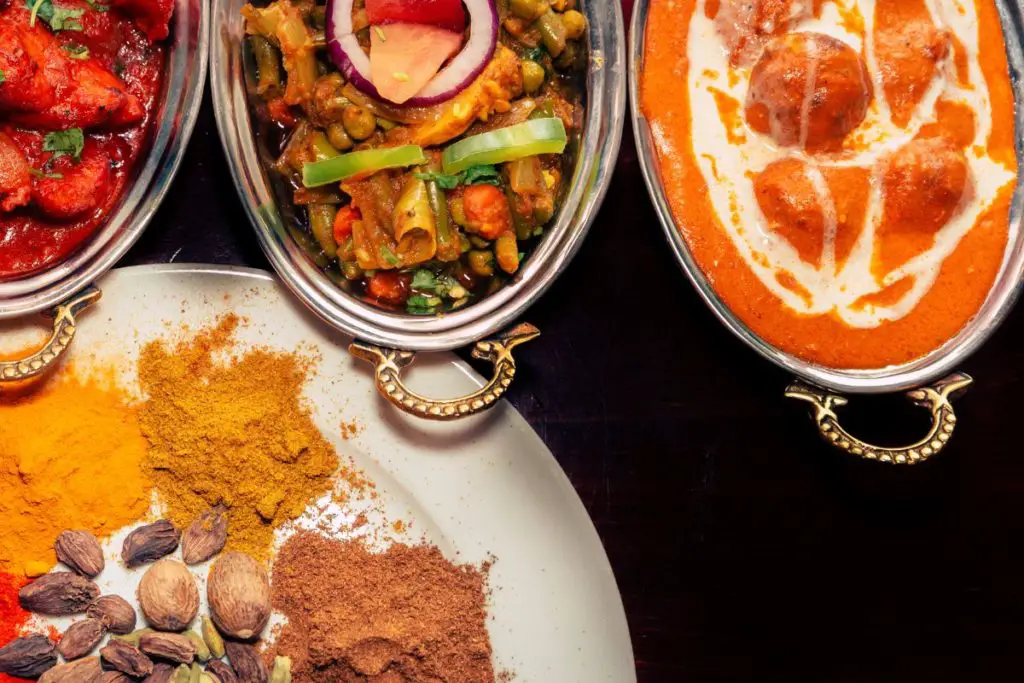
What is garam masala used for?
Garam masala is a blend of spices used in Indian and Pakistani cooking to add fragrance and flavor to dishes like soup, curries, stews, and more. You can also rub it on your meat and fish or sprinkle a generous pinch on your fries.
Why do you add garam masala at the end of cooking?
The spices used in the garam masala blend require very little heat to release their flavor and aroma. Adding garam masala at the end of cooking will give you the most fragrant and aromatic flavors without overcooking and losing its flavors.
How much garam masala to use?
Because of its intensity and fragrant flavors, you don’t need to use much garam masala to enhance the flavor of your curry or other dishes. Since it is pretty tangy, it is recommended to only add about 1 tsp to every four servings of curry. Too much garam masala would make the curry bitter.
Can you use garam masala and curry powder together?
Curry powder contains a mixture of spices with the same or similar flavor profile as garam masala spice mix. Using garam masala and curry powder together in recipes will intensify and compliment the flavors. However, when using them together, use them sparingly so you won’t over-season your dish.
Is garam masala spicy?
Garam masala spice mix is made of various hot or warm spices, but it is not spicy. It has a warm and fragrant flavor, a hint of cloves, cinnamon, and a touch of spiciness from peppercorns.
Read Also: 8 Delicious And Clever Ways To Use Cinnamon Sticks In Your Food.
